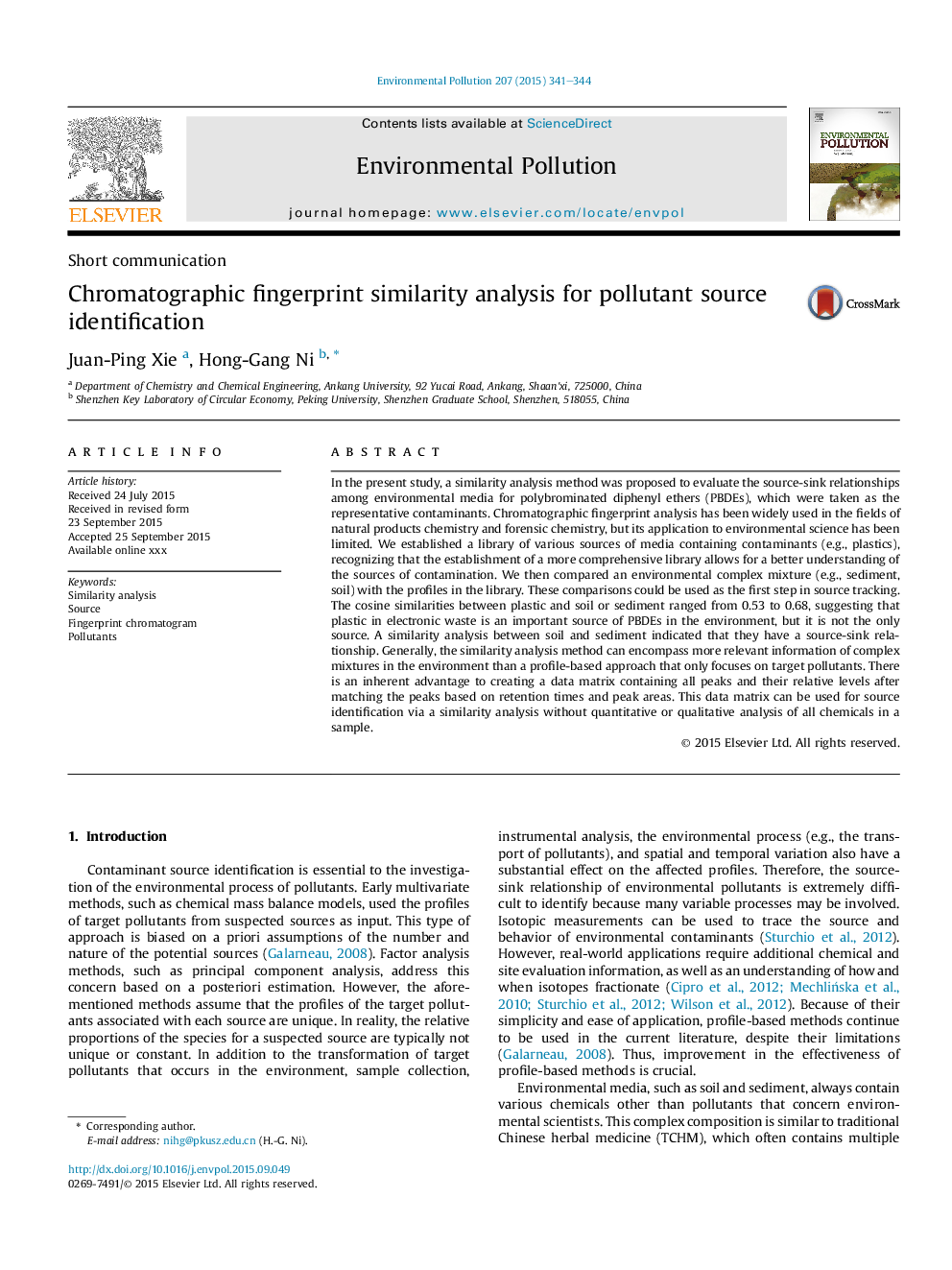| Article ID | Journal | Published Year | Pages | File Type |
|---|---|---|---|---|
| 6316202 | Environmental Pollution | 2015 | 4 Pages |
Abstract
In the present study, a similarity analysis method was proposed to evaluate the source-sink relationships among environmental media for polybrominated diphenyl ethers (PBDEs), which were taken as the representative contaminants. Chromatographic fingerprint analysis has been widely used in the fields of natural products chemistry and forensic chemistry, but its application to environmental science has been limited. We established a library of various sources of media containing contaminants (e.g., plastics), recognizing that the establishment of a more comprehensive library allows for a better understanding of the sources of contamination. We then compared an environmental complex mixture (e.g., sediment, soil) with the profiles in the library. These comparisons could be used as the first step in source tracking. The cosine similarities between plastic and soil or sediment ranged from 0.53 to 0.68, suggesting that plastic in electronic waste is an important source of PBDEs in the environment, but it is not the only source. A similarity analysis between soil and sediment indicated that they have a source-sink relationship. Generally, the similarity analysis method can encompass more relevant information of complex mixtures in the environment than a profile-based approach that only focuses on target pollutants. There is an inherent advantage to creating a data matrix containing all peaks and their relative levels after matching the peaks based on retention times and peak areas. This data matrix can be used for source identification via a similarity analysis without quantitative or qualitative analysis of all chemicals in a sample.
Keywords
Related Topics
Life Sciences
Environmental Science
Environmental Chemistry
Authors
Juan-Ping Xie, Hong-Gang Ni,
